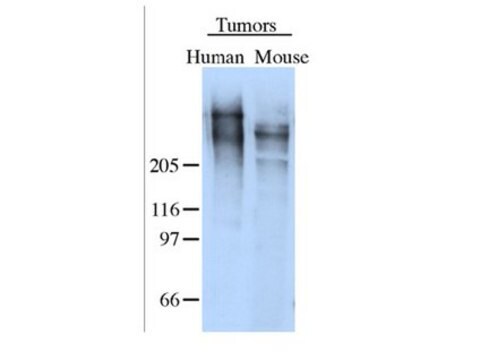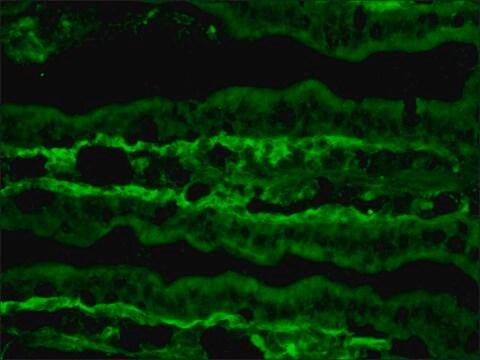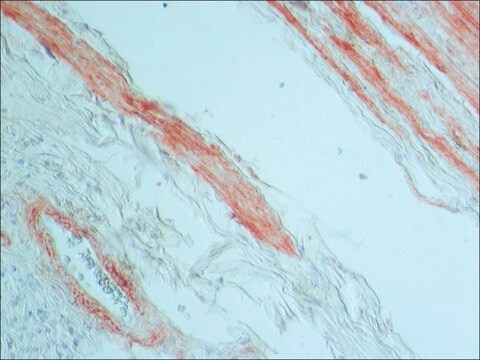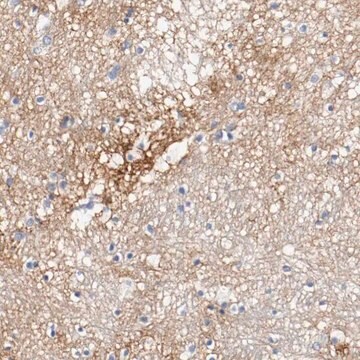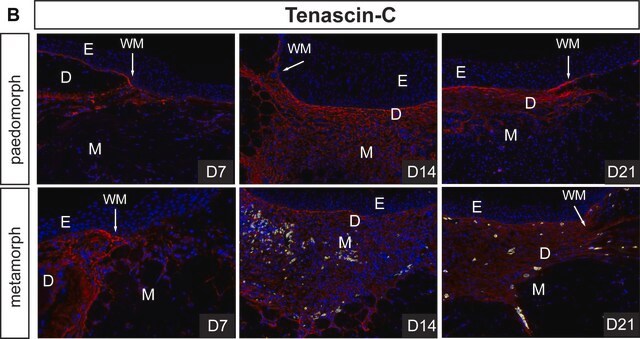SAB4200782
Anti-Tenascin antibody, Mouse monoclonal
clone BC-24, purified from hybridoma cell culture
Synonyme(s) :
Anti-Cytotactin, Anti-GMEM, Anti-GP 150-225, Anti-Glioma-associated-extracellular matrix antigen, Anti-Hexabrachion, Anti-JI, Anti-Myotendinous antigen, Anti-Neuronectin, Anti-TN, Anti-Tenascin-C (TN-C)
About This Item
Produits recommandés
Source biologique
mouse
Niveau de qualité
Forme d'anticorps
purified from hybridoma cell culture
Type de produit anticorps
primary antibodies
Clone
BC-24, monoclonal
Forme
buffered aqueous solution
Espèces réactives
human
Concentration
~1.0 mg/mL
Technique(s)
ELISA: suitable
flow cytometry: suitable
immunoblotting: suitable
immunohistochemistry: 5-10 μg/mL using pronase-retrieved formalin-fixed, paraffin-embedded human tonsil sections
Isotype
IgG1
Numéro d'accès UniProt
Conditions d'expédition
dry ice
Température de stockage
−20°C
Modification post-traductionnelle de la cible
unmodified
Informations sur le gène
human ... TNC(3371)
Description générale
Immunogène
Application
- in immunoblotting
- in Immunohistochemistry
- in flow cytometry
- in enzyme linked immunosorbent assay(ELISA)
- for blocking tenascin-C proliferating activity
Actions biochimiques/physiologiques
Forme physique
Autres remarques
Vous ne trouvez pas le bon produit ?
Essayez notre Outil de sélection de produits.
Code de la classe de stockage
10 - Combustible liquids
Classe de danger pour l'eau (WGK)
nwg
Point d'éclair (°F)
Not applicable
Point d'éclair (°C)
Not applicable
Certificats d'analyse (COA)
Recherchez un Certificats d'analyse (COA) en saisissant le numéro de lot du produit. Les numéros de lot figurent sur l'étiquette du produit après les mots "Lot" ou "Batch".
Déjà en possession de ce produit ?
Retrouvez la documentation relative aux produits que vous avez récemment achetés dans la Bibliothèque de documents.
Notre équipe de scientifiques dispose d'une expérience dans tous les secteurs de la recherche, notamment en sciences de la vie, science des matériaux, synthèse chimique, chromatographie, analyse et dans de nombreux autres domaines..
Contacter notre Service technique